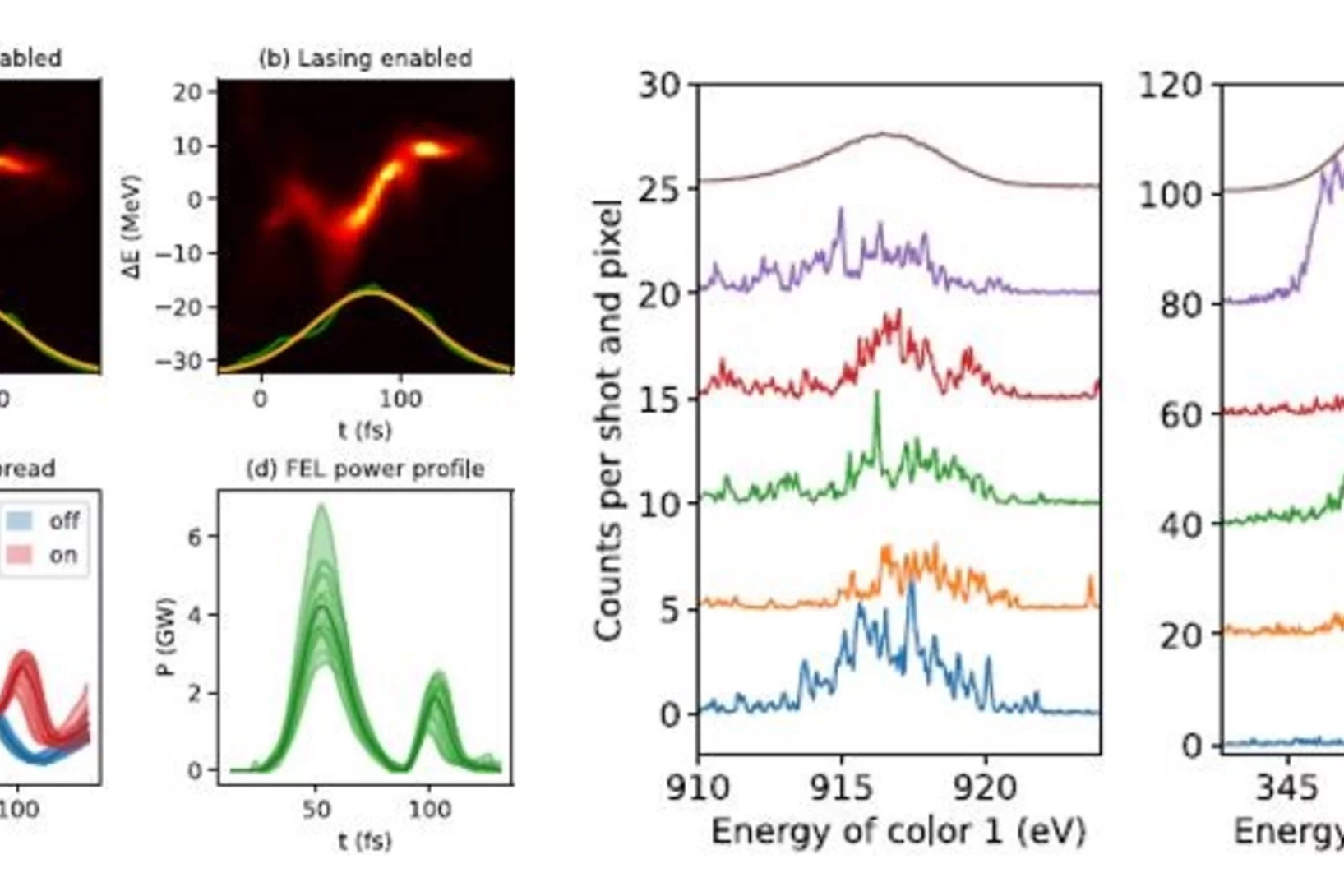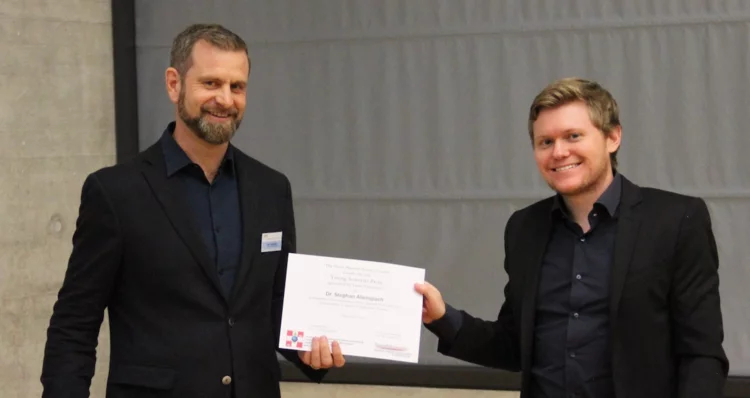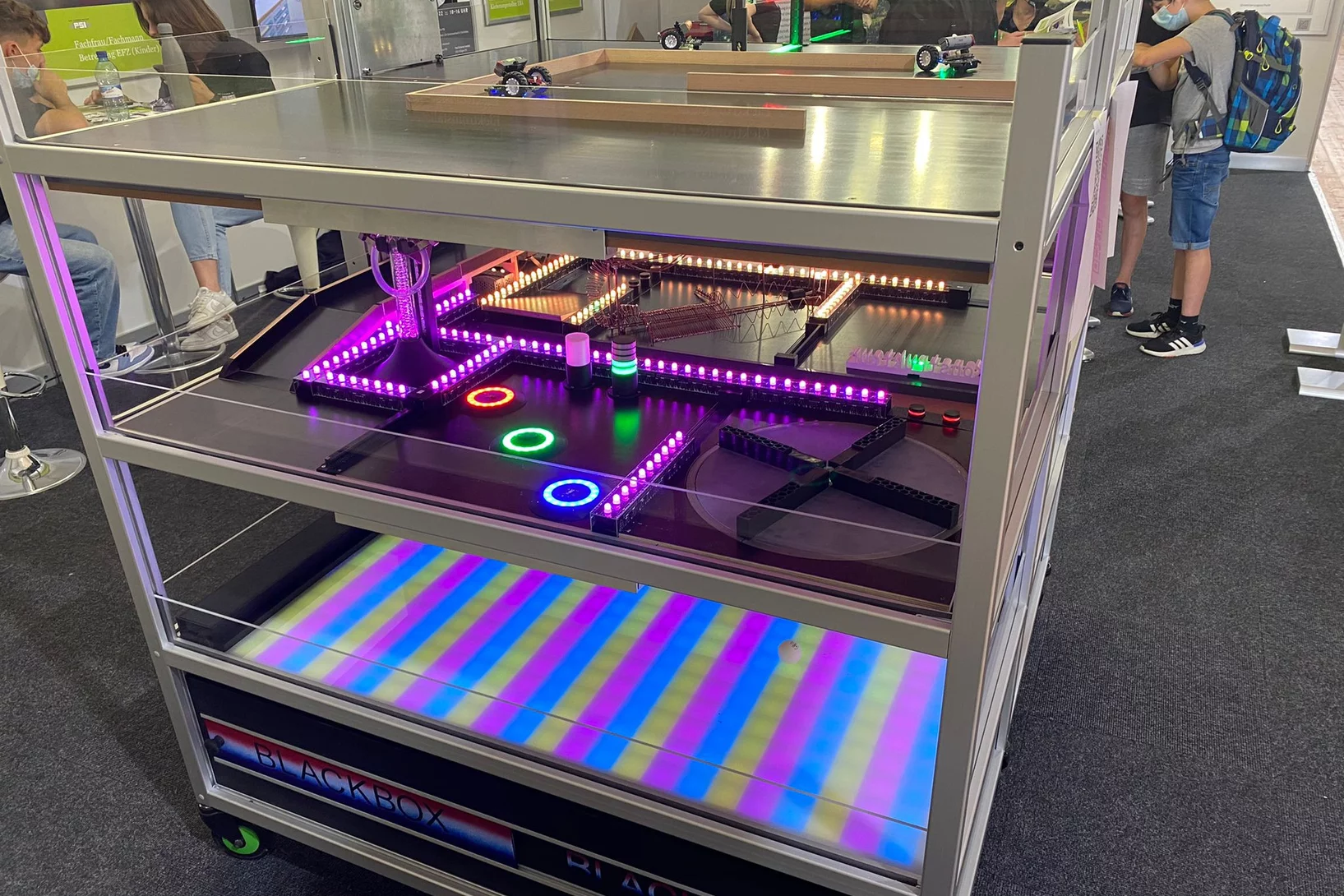At PSI, several projects are dedicated to important research questions concerning the Sars-CoV-2 coronavirus and the resulting diseases. We provide information on activities and projects, for example on investigations of lung tissue, on the production of proteins and antibodies or on ideas for new research on Covid-19.
Useful links
Widely tunable two-color x-ray free-electron laser pulses
SwissFEL team has demonstrated the generation of widely tunable two-color x-ray free-electron laser (FEL) pulses with unprecedented photon energy ratio between the two colors of about three (350 and 915 eV), in addition to a tunable time separation between the two pulses from negative time delays to up to 500 fs. These new capabilities open new opportunities to study ultrafast x-ray-induced energy transfer and relaxation processes in physics, chemistry, and biology.
New Insight into the Gas Phase Reaction Dynamics in Pulsed Laser Deposition of Multi-Elemental Oxides
The gas-phase reaction dynamics and kinetics in a laser induced plasma are very much dependent on the interactions of the evaporated target material and the background gas. For metal (M) and metal–oxygen (MO) species ablated in an Ar and O2 background, the expansion dynamics in O2 are similar to the expansion dynamics in Ar for M+ ions with an MO+ dissociation energy smaller than O2. This is different for metal ions with an MO+ dissociation energy larger than for O2. This study shows that the plume expansion in O2 differentiates itself from the expansion in Ar due to the formation of MO+ species. It also shows that at a high oxygen background pressure, the preferred kinetic energy range to form MO species as a result of chemical reactions in an expanding plasma, is up to 5 eV.
Competing Magnetic Phases in LnSbTe (Ln = Ho and Tb)
The interplay between a topological electronic structure and magnetism may result in intricate physics. In this work, we describe a case of rather peculiar coexistence or competition of several magnetic phases below seemingly single antiferromagnetic transition in LnSbTe (Ln = Ho and Tb) topological semimetals, the magnetic members of the ZrSiS/PbFCl structure type (space group P4/nmm). Neutron diffraction experiments reveal a complex multi-step order below TN = 3.8 K (Ln = Ho) and TN = 6.4 K (Ln = Tb). Magnetic phases can be described using four propagation vectors k1 = (1/2 0 0) and k2 = (1/2 0 1/4) at a base temperature of 1.7 K, which transform into incommensurate vectors k1′ = (1/2 – δ 0 0) and k3 = (1/2 – δ 0 1/2) at elevated temperatures in both compounds. Together with the refined models of magnetic structures, we present the group theoretical analysis of magnetic symmetry of the proposed solutions. These results prompt further investigations of the relation between the electronic structure of those semimetals and the determined antiferromagnetic ordering existing therein.
Welcome Đorđe
We are happy to welcome Dr Đorđe Cvjetinović.
Đorđe will be working on the SINCHRON project as part of his postdoctoral fellowship.
Making it easier to differentiate mirror-image molecules
Researchers have shown that mirror-image substances – so-called enantiomers – can be better distinguished using helical X-ray light.
TFI goes TecDays
In July 2022, two PhDs of our Thin Films and Interfaces (TFI) Group offered a practical teaching module to pupils at the Kantonsschule Stadelhofen as part of the Swiss TecDays. These are one-day events at Swiss grammar schools, organized by the Schweizerische Akademie der Technischen Wissenschaften (SATW), to support and strengthen technology education at schools. By bringing together pupils and experts from industry, universities, or research institutions, TecDays aims to raise an early awareness for technology and science.
High performance doped Li-rich Li1+xMn2-xO4 cathodes nanoparticles synthesized by facile, fast and efficient microwave-assisted hydrothermal route
Li-rich nanoparticles of Li1+xMn2-xO4 doped with Al, Co or Ni are successfully synthesized using a facile, fast and efficient microwave-assisted hydrothermal route. In this study, we demonstrate that nanocrystallinity and cationic doping play an important role in improving the electrochemical performance with respect to LiMn2O4 microparticles. They significantly reduce the charge-transfer resistance, lower the 1st cycle irreversible capacity to 6%, and achieve a capacity retention between 85 and 90% after 380 cycles, with excellent columbic efficiency close to 99%.
PSI at the this year’s Swiss Nano Convention!
From 5 July to 6 July 2022, the Swiss NanoConvention will take place in Fribourg. The platform offers the opportunity to exchange, discuss and network with key players from science and industry.
PSI will be there - visit us at our joint stand with the Hightech Zentrum Aargau! In combination with the possibilities of state-of-the-art material analytics, we can help you to improve both your products and your manufacturing processes.
Stephan Allenspach received the SNSS Young Scientists Prize
Congratulations to Stephan Allenspach for receiving the Young Scientist Prize of the Swiss Neutron Scattering Society for his outstanding PhD thesis. Stephan did his PhD in the Quantum Criticality and Dynamics Group lead by Christian Rüegg.
Cosmic Run at PSI
We assembled a Mu3e vertex detector prototype and a ribbon of the fibre detector with their associated data acquisition (DAQ) at PSI. This setup was used to develop commissioning and tuning procedures for the sensors, advance DAQ integration, develop user interfaces, check timing and finally to detect cosmic ray muons passing through the set-up.
MARVEL team wins inaugural PRACE HPC Excellence award
The first ever PRACE (Partnership for Advanced Computing in Europe) HPC Excellence Award has been awarded to a team led by Professor Nicola Marzari, head of Theory and Simulation of Materials at EPFL's School of Engineering and Materials Simulations at PSI, and director of NCCR MARVEL. The € 20,000 award is given to “an outstanding individual or team for ground-breaking research that leads to significant advances in any research field through the usage of high-performance computing”, and recognizes the team’s effort in the discovery and characterization of novel two-dimensional materials.
Lehrberufe à la Carte 2022
Erneut konnten wir vielen interessierten Besucherinnen und Besucher am Sonntag, 26. Juni 2022 unsere Berufsbildung vorstellen und ihnen ihre Fragen beantworten.
Seeking the sensational on a small scale
The Swiss Research Magazine 'Horizons' features particle physics performed at PSI.
Reaction insights help make sustainable liquid fuels
Methanol made from CO2 in the air can be transformed into carbon neutral fuels. New mechanistic understanding aids development of this sustainable alternative.
Lehrberufe à la carte 2022
Am 26. Juni 2022 präsentiert das PSI seine 15 verschiedenen Lehrberufe. Auch das Schülerlabor iLab öffnet an diesem Sonntag seine Türen.
Jisoo Kim bags the 2022 Werner Meyer-Ilse Award
Jisoo Kim was awarded the 2022 Werner Meyer-Ilse Memorial Award. The WMI Award is given to young scientists for exceptional contributions to the advancement of X-ray microscopy through either outstanding technical developments or applications, as evidenced by their presentation at the International Conference on X-ray Microscopy and supporting publications. Jisoo was awarded for his development of the method "Time-resolved x-ray scattering tomography for rheological studies", and is co-recipient of the award with Yanqi Luo from the Advanced Photons Source for her work on applications. The award was presented during the 15th International Conference on X-ray Microscopy XRM2022 hosted by the National Synchrotron Radiation Research Center (NSRRC) in Hsinchu, Taiwan on 19 - 24 June, 2022.
BB-Parcours Helferessen
Der Berufsbildungs-Parcours repräsentierte die Berufsbildung des Paul Scherrer Institut an der Berufsschau AB21 in Wettingen.
Elternabend
Gegen 170 Lernende, Eltern, Berufsbildnerinnen, Berufsbildner und Betreuer besuchten den diesjährigen Elternabend am 11. Mai. Vorträge, Arbeitsplatzbesichtigungen, Gespräche und ein feines Essen bildeten das Rahmenprogramm.
Faster and smarter
PSI is pooling its expertise regarding the evaluation of research data in the new research division Scientific Computing, Theory and Data.
European map of aerosol pollution can help improve human health
Researchers have measured and determined the sources of aerosol pollution at 22 locations in Europe.
Synthesis of Metallic Lanthanide Thin Samples
This work aimed to produce intermetallic samples of platinoid metals (active metal matrix) and lanthanides (co-metal) and via the method of Coupled Reduction, i.e. a thermal treatment of the combination of the lanthanide oxide and noble metal at high temperature, as high as 1100 °C, under a constant flow of H2. We have demonstrated by means of several techniques, such as Scanning Electron Microscope, Energy Dispersive X-Ray Spectroscopy, Alpha Spectrometry and Radiographic Imaging, that this method, at defined experimental conditions (temperature, pressure and concentration) yields a metallic lanthanide thin film when using platinum as active metal matrix. Conversely, the formation of a bulk intermetallic compound was obtained when using Pd as matrix. Those systems will have applications in different nuclear physic and radiochemistry studies, such as irradiation targets for production of superheavy elements and for nuclear data determination.
Hercules and batteries, X-rayed
Developments of the MIXE technique at PSI
With muons, PSI researchers can examine objects non-destructively. This helps in archaeology and battery development.
Yanting Qian has received the MSc/PhD competition award in the FISA2022-EURADWASTE'22 conference
Yanting Qian has received the MSc/PhD competition award in the FISA2022-EURADWASTE'22 conference. She works on the retention of redox-sensitive Tc on Fe-bearing clay minerals.
Hercules and batteries, X-rayed
With muons, PSI researchers can examine objects non-destructively. This helps in archaeology and battery development.
SANS-LLB at PSI: keeping up with the soft matter community needs
The shutdown of the Orphée reactor at LLB (Saclay, France) and the upgrade of the SINQ neutron guide system at PSI (Villigen, Switzerland) in 2019 were the beginning of a long-term collaboration between PSI and LLB. The SANS-LLB instrument, formerly known as PA20, has travelled more than 500 km, and since 2020 is being installed at SINQ/PSI as a collaborative effort between PSI and LLB. The aim is to make a modern SANS instrument available to the soft matter neutron scattering community at the SINQ spallation source.
SwissSkills 2022
Wir suchen die Besten des Landes! Im PSI hat sich Flavio M. erfolgreich für die SwissSkills qualifiziert!
NMB/Eckelman Young Investigator Award 2022
Chiara Favaretto, PhD student in the “Radionuclide Development” group at the Center for Radiopharmaceutical Sciences, received the NMB/Eckelman Young Investigator Award for the abstract entitled: “Production and radiochemical separation of terbium-155 from enriched gadolinium target material and its preliminary application in SPECT imaging”, presented at the International Symposium on Radiopharmaceutical Sciences (iSRS 2022).
Power-to-gas system for energy independence
New technology provides synthetic natural gas for domestic heating
Stable Performance of High Capacity Cobalt-Free Li-ion Battery
Lithium-rich layered oxides, containing cobalt, despite being promising high-capacity cathode materials, need alternatives to eliminate toxic and geopolitically restricted cobalt. An ongoing search for low-cost, Co-free Li-rich cathode materials with a better structural stability lead to investigation of Li1.16Ni0.19Fe0.18Mn0.46O2 (LNFM), where cobalt is replaced by abundant iron. Our LNFM not only delivered a high capacity of 229 mAh/g but also has a stable average discharge voltage when cycled to upper cutoff potential of 4.8 V in additive-free electrolyte.
“If you’re in a certain position, you should step forward”
Kirsten Moselund heads the new Laboratory for Nano and Quantum Technologies. In this interview she discusses quantum research at PSI and how nanophotonics can assist with this.





























